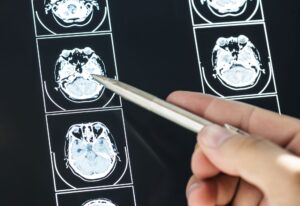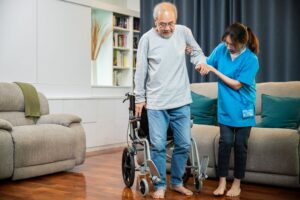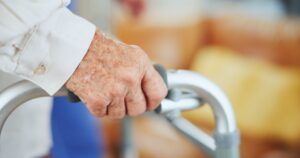How to Recognize Signs of Impending Death After a Stroke: 10 Common Signs
Common Signs of Impending Death After Stroke
The body has its own language when healing becomes impossible. Signs of impending death after stroke speak through subtle shifts that families often notice before medical equipment catches them. The body of your loved one starts to save energy for the most fundamental purposes: breathing, circulation, and comfort. Worsening symptoms after a stroke might indicate the body has changed its priorities, rather than always indicating medical neglect.
Each person’s experience unfolds differently. Some changes happen gradually over weeks, while others appear more suddenly. This process is shaped by the place of the stroke, the general health of your loved one, and their particular resiliency. Knowing these tendencies helps one differentiate between more significant changes requiring various sorts of treatment from transient tough patches.
1. Changes in Breathing Patterns
One of the most unambiguous stories about what’s going on inside comes from breathing. You can find pauses between breaths that appear to last eternity. The beat becomes irregular, sometimes rapid and shallow, and other times deep and laboured, as the body works harder for every breath.
Doctors call this pattern Cheyne-Stokes breathing. It sounds complicated, but you’ll recognize it: breathing gradually gets deeper and faster, then slower and lighter, before stopping completely for several seconds. This cycle repeats as the brain struggles to regulate oxygen levels. You might also hear gurgling sounds with each breath as fluids collect in the airways. These changes happen when stroke damage reaches the brain areas that control breathing, the body’s most automatic function.
2. Loss of Appetite and Difficulty Swallowing
Loss of appetite after a stroke often appears as a natural response as the body redirects energy away from digestion. Food that once brought joy starts losing its appeal. Your mom might push away her favorite soup after just one spoonful, or your dad might turn his head when you offer his usual afternoon snack. This rejection of food comes from the body’s wisdom, not stubbornness.
Swallowing becomes a challenge as stroke damage affects the intricate dance of muscles needed for this seemingly simple act. Water might cause coughing fits. Food stays in the mouth without being swallowed. The risk here goes beyond nutrition – when food or liquid takes the wrong path into the lungs instead of the stomach, pneumonia becomes a real threat that weakens an already struggling system.
3. Extreme Weakness and Fatigue
The exhaustion goes beyond anything your loved one has experienced before. Someone who was participating in physical therapy or managing daily tasks suddenly lacks the strength to sit up without help. Arms and legs feel impossibly heavy. Even holding a cup becomes too much effort.
This weakness differs from regular post-stroke fatigue because rest doesn’t restore energy. Muscles lose their tone, making limbs feel loose and floppy. The grip that was getting stronger grows weak again. Walking, even with maximum support, becomes impossible. The body has redirected every bit of available energy toward keeping the heart beating and lungs working.
4. Changes in Consciousness and Awareness
Mental fog thickens as brain function declines. Sleep claims more and more hours of the day. When awake, confusion deepens about time, place, and sometimes even familiar faces. Questions get delayed responses or answers that don’t quite match what you asked.
You might call their name without getting the usual response. Gentle touches that once brought comfort may not register. Eye contact becomes rare as the ability to focus attention fades. These consciousness changes reflect widespread brain dysfunction beyond the original stroke damage – multiple brain regions are no longer communicating effectively.
5. Irregular Heart Rate and Blood Pressure
The heart begins struggling to maintain its steady rhythm. Blood pressure readings swing wildly from dangerously high to concerningly low numbers. The pulse becomes weak and sometimes hard to find at the wrist. These fluctuations put tremendous stress on a cardiovascular system already working overtime.
Hands and feet grow cold as blood flow concentrates on protecting core organs. Skin around the lips and fingernails might take on a bluish tint. These changes signal that the heart can no longer pump effectively to all parts of the body, prioritizing the brain and other central organs over arms and legs.
6. Skin Color and Temperature Changes
Circulation problems first show up in how the skin looks and feels. Feet that were always warm now feel cold to your touch. The skin develops a mottled appearance, with patches of different colors creating an irregular pattern across hands, arms, or legs.
A bluish color around the lips, under the fingernails, or at the earlobes indicates insufficient oxygen in the bloodstream. The overall skin tone might shift from healthy pink to pale or grayish. These visible changes reflect the circulatory system’s inability to deliver adequate oxygen and nutrients throughout the body.
7. Increased Agitation or Restlessness
Sometimes, a peaceful person becomes surprisingly agitated, pulling at blankets or trying to remove medical devices. Restlessness takes hold despite profound physical weakness. This behavior represents brain dysfunction rather than conscious distress – the damaged brain misinterprets signals or creates confusion about surroundings.
Some see or hear things that aren’t there, maybe crying out a dead spouse or engaging in talks with invisible guests. Although these episodes can be disturbing to see, for the individual going through them, they usually provide comfort. The brain is interpreting data differently, occasionally facilitating calm reunions with loved ones who have already passed.
8. Difficulty Speaking or Understanding
Words that came easily before now get tangled up or disappear entirely. Speech becomes slurred or mumbled. Sometimes the words don’t match what your loved one seems to want to say. Others lose the ability to speak altogether, though their eyes might still show they’re trying to communicate.
Understanding becomes equally challenging. Simple requests or familiar conversations get confused responses or no response at all. Reading becomes impossible, even for words they’ve known their whole lives. Language centers in the brain are breaking down, cutting the vital connections between thought and expression.
9. Changes in Urination and Bowel Function
Bathroom needs become increasingly difficult to manage. Urination might become infrequent or stop entirely as kidney function declines. When the kidneys continue producing urine, your loved one may lose the ability to signal when they need help, leading to accidents that would have mortified them before.
Bowel movements may cease or become involuntary. The digestive system slows dramatically as energy gets redirected elsewhere. These elimination changes reflect the body’s systematic shutdown of non-emergency functions while trying to maintain circulation and breathing.
10. Withdrawal from Social Interaction
Someone who always loved visitors and conversation gradually turns inward. Eye contact becomes rare. Responses to family members fade. This withdrawal reflects an instinctive conservation of energy for survival rather than sadness or rejection of relationships.
You might notice them looking past you, sometimes reaching toward something only they can see. Sleep stretches longer while wakeful moments grow shorter and less engaged. This social stepping back represents the natural progression of dying rather than depression or a conscious choice to avoid loved ones.
Stroke and Life Expectancy
An individual’s life expectancy after stroke can be profoundly affected by this medical event; results vary widely depending on age, degree of the stroke, and general state of health of the patient. Understanding how these elements interact can help one better grasp long-term prognosis and survival rates.
Factors That Affect Life Expectancy
- Age: Age is one of the most important determinants of life expectations. Older persons are often less likely to recover totally and more prone to have major strokes. For instance, those over 75 had a far greater death risk after a stroke than younger ones. Further lowering their life expectancy is the fact that elderly people frequently have pre-existing medical issues that might aggravate the consequences of a stroke.
- Pre-existing health conditions: Patients with chronic diseases, including diabetes, hypertension, or heart disease, run more danger of having a fatal stroke. These disorders impair the body’s capacity to heal from a stroke, and sometimes, sluggish or partial recovery is the result. Furthermore, such people are more likely to develop secondary issues such as infections or organ failure, which can significantly reduce their life expectancy.
- Stroke severity: Still another important factor is the degree of the stroke. Often referred to as a transient ischemic attack, or TIA, a little stroke could only modestly affect life expectancy and not have long-term consequences. On the other hand, a big stroke can seriously reduce survival chances, either leading to coma or major brain damage. Patients who develop immobility or comatose have low chances of recovery, so they need hospice care for stroke patients.
Life Expectancy in Bedridden Patients
Following a stroke, bedridden people deal with especially difficult situations. Among the many side effects of immobilization include urinary tract infections, bedsores, and pneumonia. Because they can be challenging to control and can cause sepsis or organ failure, these secondary illnesses can dramatically lower life expectancy. After a massive stroke, bedridden patients usually have a much-reduced life expectancy; family members may have to think about palliative or hospice care to guarantee their loved one is comfortable in their last days.
Fatal Stroke and Its Impact
Particularly if it results in brainstem injury or severe bleeding in the brain, a fatal stroke sometimes causes immediate or near-instant death. In these situations, rather than months or years, life expectancy can be expressed in hours or days. Some patients, on the other hand, survive the first stroke but are left with significant deficits that greatly lower their quality of life and life expectancy.
Under these conditions, decisions on a final course of life treatment become rather crucial. To bring comfort and dignity in the latter days, weeks, or months of life, families may have to look at options including palliative care or hospice.
The Role of Palliative Care and Support for Stroke Patients
Palliative care changes everything when recovery becomes unlikely. Instead of fighting a battle that can’t be won, care shifts toward ensuring your loved one feels comfortable and maintains dignity during their final chapter. This specialized approach tackles pain, breathing difficulties, and emotional distress that often accompany serious illness after a stroke.
Watching someone you love show signs of impending death after a stroke leaves families feeling helpless and overwhelmed. Professional palliative teams understand these feelings intimately. They help interpret what you’re seeing, explain what might come next, and offer emotional support while you process the reality of losing someone precious.
Comfort care extends far beyond medications and medical devices. Some families find peace in religious observances that honor their cultural traditions, including rituals like 40 days after death commemorations. Others prefer focusing on memory-making and having important conversations. Skilled care teams adapt their support to match what feels right for your family’s values and beliefs.
The team might coordinate music therapy for someone who always loved singing, arrange chaplain visits for spiritual comfort, or provide gentle massage therapy. These touches work alongside medical management to care for the whole person, not just symptoms. Family members learn how to provide gentle care themselves while understanding when professional help becomes necessary.
What Causes Death After a Major Stroke?
The brain’s lost ability to run the body’s essential systems is what causes death after a major stroke. The initial stroke cuts communication pathways between the brain and organs. Secondary problems then arise as injured brain tissue swells, which could perhaps restrict blood supply to healthy brain regions, therefore choking off those parts. This starts a cascade whereby several organ systems fail, therefore exceeding the body’s capacity for adaptation.
One of the most deadly aftereffects following major strokes is brain swelling, sometimes known as cerebral edema. The skull can’t expand to accommodate increased brain volume, creating dangerous pressure that squeezes blood vessels shut. Healthy brain tissue gets starved of oxygen, expanding damage far beyond the original stroke location.
Signs of death after stroke often reflect the cardiovascular system’s collapse as the brain stem loses its grip on heart function and blood pressure control. Breathing fails when brain centers controlling this automatic function sustain too much damage. Kidneys shut down when blood pressure drops too low for proper filtration. Each organ system’s failure stresses the others, creating a downward spiral.
Infections pose another serious threat to stroke survivors whose immune systems are already compromised. Pneumonia develops easily when swallowing problems cause food or saliva to enter the lungs. Urinary tract infections spread to the bloodstream when bladder emptying becomes incomplete. Bed sores turn infectious in immobilized patients, potentially triggering life-threatening sepsis.
Fatal stroke complications can include blood clots forming in motionless limbs that break loose and travel to the lungs. Seizures may emerge as damaged brain tissue creates chaotic electrical activity. Each complication adds stress to systems already pushed beyond their limits, making recovery increasingly impossible as problems multiply.
Understanding these processes helps families grasp why aggressive medical interventions sometimes become ineffective. When the body stops responding to treatments, damage has crossed the threshold where healing becomes impossible. This knowledge supports making informed decisions about transitioning to comfort-focused care when cure slips out of reach.
Treasuring Remaining Moments
Learning to recognize signs of impending death after stroke gives families the power to make choices grounded in love during one of life’s most challenging passages. These warning signals create opportunities for important conversations, relationship closure, and preparation for what lies ahead. Understanding how the body naturally progresses toward death removes some of the fear and confusion that often surrounds this process.
Palliative care offers a compassionate path when aggressive medical interventions no longer serve your loved one well. This approach preserves dignity while managing symptoms that could cause unnecessary suffering. Professional guidance helps families navigate overwhelming emotions while providing practical wisdom for the road ahead.
Knowledge carries both weight and grace during these tender times. Facing mortality feels crushing, yet understanding these signs allows families to treasure remaining moments together. Being prepared means you can focus on love and connection rather than medical uncertainty. Every family’s story unfolds differently, but recognizing common patterns provides a roadmap for navigating this final chapter with dignity and peace.







Post Comments